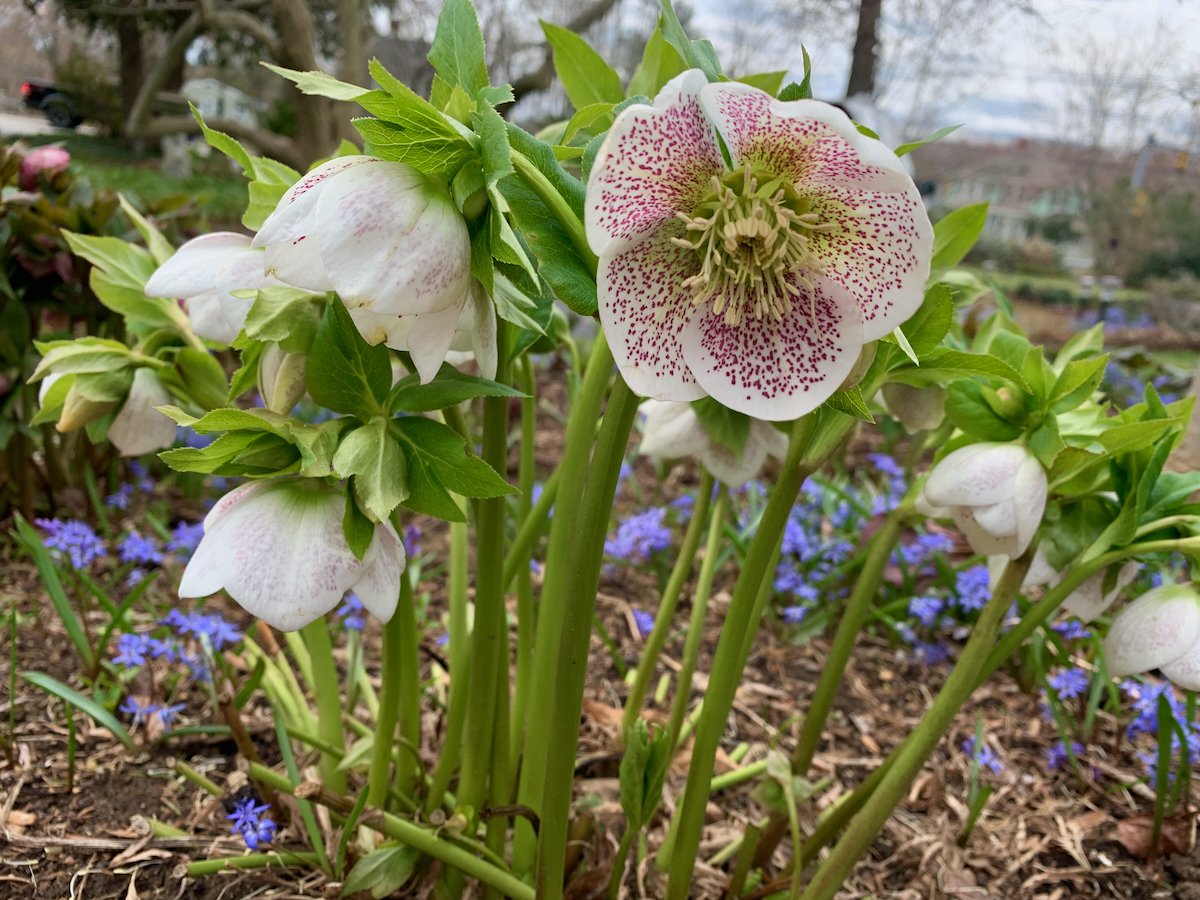Japanese Stewartia: A Multi-Season Beaut
/asily grown and beautiful in all four seasons, Japanese Stewartia earns its keep in the garden year-round. Valuable as a specimen tree in the lawn or shrub border, it offers long-term impact in the landscape with its summer flowers, brilliant autumn color and exfoliating bark that provides dramatic winter interest.
Japanese Stewartia (Stewartia pseudocamellia) is perfectly suited to the suburban landscape. In the winter, its beautiful bark and sinewy, muscular trunk and branches create an unbeatable effect. The bark has the look of camouflage gear, smooth with patches of rich gray, tan and terra cotta.
The tree has a pyramidal shape, and young branches have a slight zig-zag pattern of growth with small pointy buds at their tips. Its architectural beauty is especially dramatic when the tree is outlined with a fine tracery of snow. Japanese Stewartia is one of the few trees that bloom in the summer, producing a succession of camellia-like white flowers with gold anthers for more than two weeks in July. In the fall, it dazzles! Its lustrous green summer foliage turns to shades of yellow, red and reddish-purple. When back-lit by the sun, it is breathtaking.
A bit of advice about Japanese Stewartia: be sure to plant it where you can see it all year long – you won't want to miss a thing! Mine is planted across the yard from my kitchen window so I can enjoy it easily in every season. The tree is now large enough to fill the view from the window. In the summer, it adds to the serene beauty of my shrub border. It is underplanted with shade-loving, long-lived perennials: golden Japanese forest grass (Hakonechloa macra 'Aureola'), Hosta (H. 'Liberty', H. 'Kabitan', H. 'Kiwi Blue Baby'), shiny European Ginger (Asarum europaeum) and assorted Epimedium cultivars. Add some coleus and angel-wing begonia and you have a heart-stopping moment in the garden. In the fall, the Stewartia's blazing foliage takes center stage. And in the winter, its patchwork bark pattern stands out against the snow and clear blue sky. This naturally well-shaped tree is one of the most desirable small- to medium-sized specimen trees around.
How can a tree that offers so much require so little? Plant Stewartia in well-drained humus rich soil in a sunny spot with some afternoon shade and you will be rewarded with years of stunning beauty. It reaches 30-40 feet at maturity and has no major disease or pest problems. It is somewhat pricey, but the distinct contribution it provides to the four-season landscape makes it a garden gem. Stewartia can be purchased locally at many nurseries, including Weston Nurseries and through mail order sources such as RareFind Nursery (www.rarefindnursery.com).
By Joan Butler




















